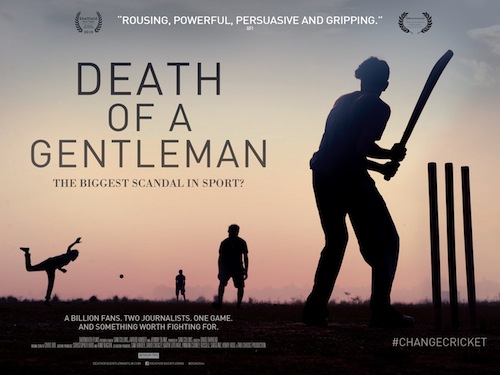 The feeling that prevails throughout “Death of a Gentleman”, a documentary made by Sam Collins, Jarrod Kimber and Johnny Blank, is frustration. Cricketers, commentators and fans are frustrated by the state of Test cricket. Former administrators are frustrated by the state of cricket governance. Collins and Kimber are frustrated by all of these things as well as the possibility that if something isn’t done, cricket itself is in danger. It is this frustration that is the driving force behind this film.
The feeling that prevails throughout “Death of a Gentleman”, a documentary made by Sam Collins, Jarrod Kimber and Johnny Blank, is frustration. Cricketers, commentators and fans are frustrated by the state of Test cricket. Former administrators are frustrated by the state of cricket governance. Collins and Kimber are frustrated by all of these things as well as the possibility that if something isn’t done, cricket itself is in danger. It is this frustration that is the driving force behind this film.
Death of a Gentleman is a film well worth watching. It begins with Collins and Kimber trying to answer the question, “Is Test cricket dying?” and ends with them documenting, by dint of being in the right place at the right time, the extent of corruption, cronyism and rot in cricket administration.
Their investigation into the wane of Test cricket leads them, inevitably, to the IPL, which provided the boards of various countries a blueprint of how to make money off of cricket without having to deal with any of those pesky international games. From the IPL, it’s a very short step to N. Srinivasan, owner of India Cements and Chennai Super Kings, President of the BCCI and eventual Chairman of the ICC.
Over the film, Kimber and Collins find Srinivasan’s influence in almost every aspect of the game despite several glaring conflicts of interest, leading up to the ‘Big 3’ deal where India, England and Australia’s cricket boards attempted to take control of a majority of the profits earned by international cricket.
Collins and Kimber have been vindicated, now that Srinivasan is being held accountable for his actions at the time. And yet, though the main villain of the piece is out of the picture, the problems facing cricket raised in this film have not gone away. While other sporting organizations like FIFA have proved to be equally corrupt, they have at least expanded the game. Cricket remains a calcified members club, refusing to open up and let anyone new compete at the highest level.
Cricket at the Olympics, which would do wonders for the sport in other countries, is dismissed offhand by Giles Clarke, head of the ECB at the time, as it would clash with the English cricket summer. The myopic, greedy focus on “the game in this country” as against the growth of the game around the world is extraordinarily frustrating for anyone who would like to see the game go beyond the same 10 tired countries, half of them struggling to fund themselves. It would be interesting to hear what the “new look England” and their media managers have to say about the expansion of cricket.
Ultimately, everything boils down to money. Collins and Kimber do a good job of following the money in cricket; they find that administrators in various countries choose to make as much money for themselves and their board in the short term at the expense of the expansion of cricket to other countries, and even the maintenance of cricket in countries that already play the game.
This film informs us that the people running cricket are very likely not doing it for the love of the game; not when there are huge sums of money involved.
If something is worth comparatively little money, does it lose all value? Test cricket is nowhere near as profitable as domestic T20 leagues, and requires the investment of much more time, but its cultural significance and history is unparalleled by almost any other sport.
The beauty of Test cricket is that it has space for both Ed Cowan, the traditional opening batsman from Australia whose story of getting a Test cap provides the human angle to this documentary, and David Warner, his opening partner who epitomizes T20 cricket. This is a beautiful game that evolves, and it should be preserved and played for decades to come.
By prioritizing domestic wealth over growing the game at the international level, cricket’s administrators prove that they are interested in consumers, not fans.
Death of a Gentleman released in several countries in 2015. It released in India only last week. It may not be a popular film, but it says some very important things that cannot be ignored about the game loved by so many.
It can be found here.